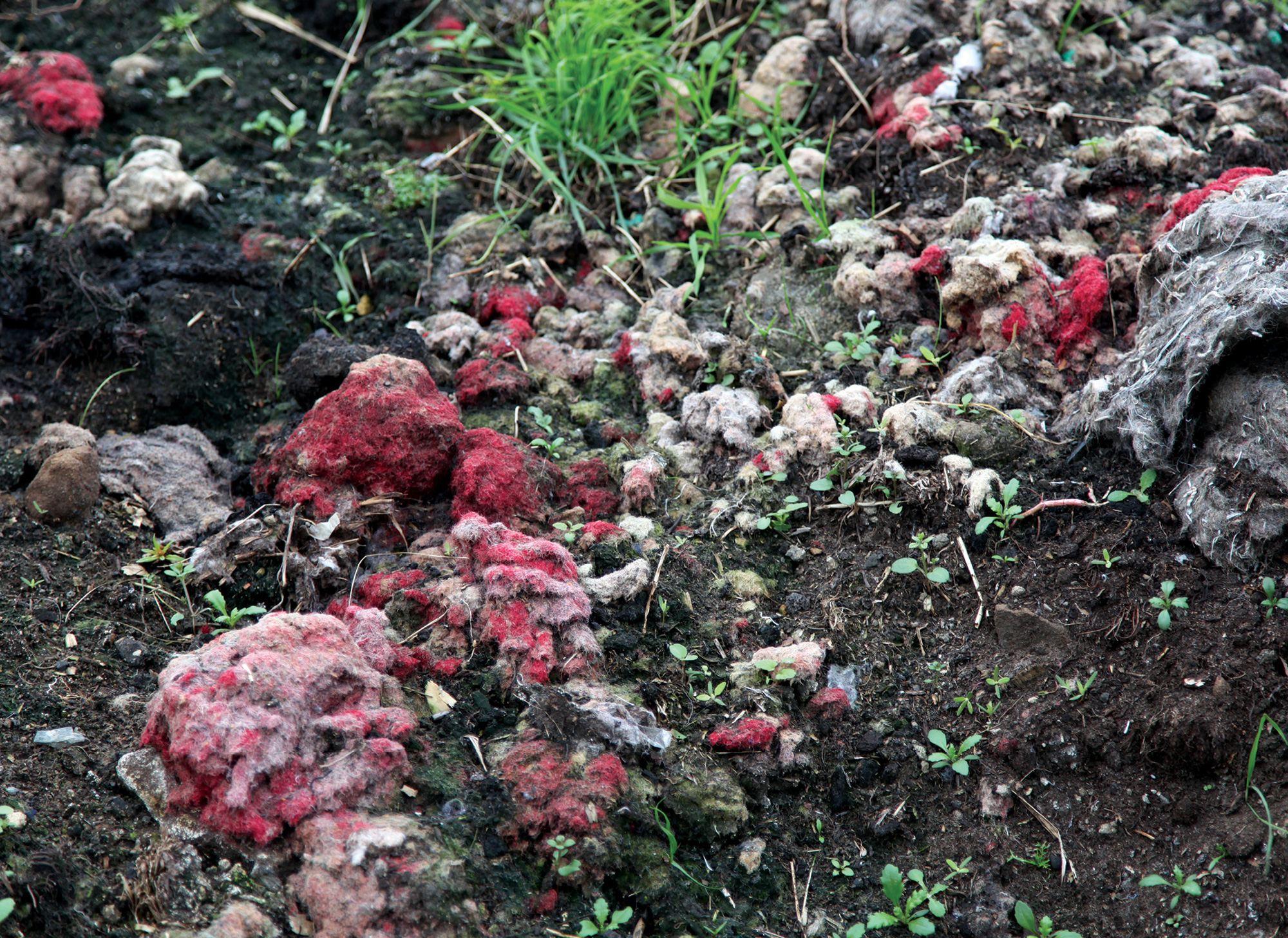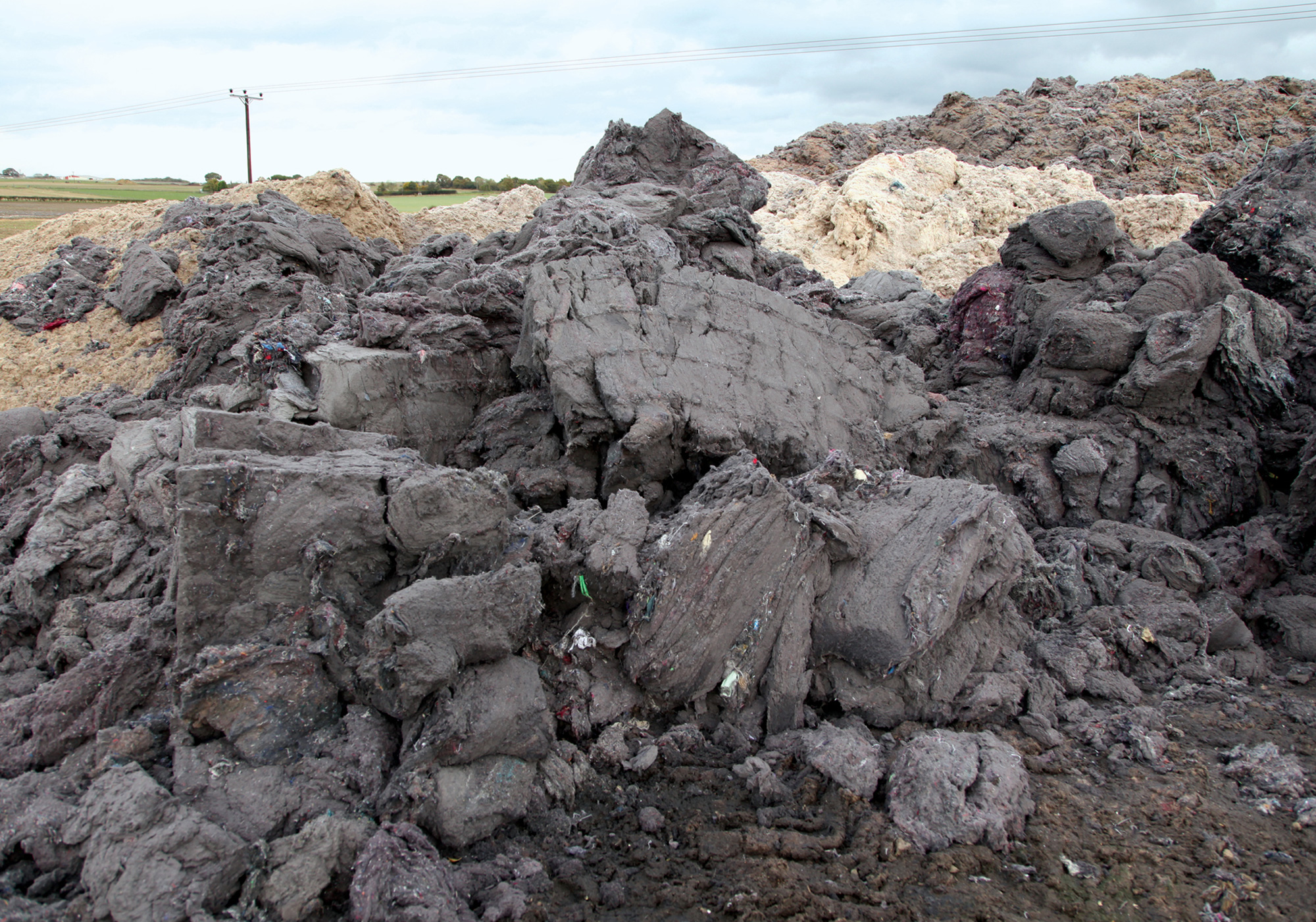Leftovers / Devil’s Dust
What remains of shoddy
Hanna Rose Shell
“Leftovers” is a column that investigates the cultural significance of detritus.

You can see the heap as you travel between Manchester and Leeds on the M62, the motorway that crosses England’s old industrial region and connects its two great port cities, Liverpool and Hull. It is hard to tell what it is, though, and most travelers probably pass right by. Reaching about twenty feet at its highest point, the heap could easily be mistaken for an unusual geological formation. From a different angle, it might appear to be a mound of manure but for the fact that it’s dappled gray. The smell is also different: like rotten wool, or perhaps a wet dog. Up close, small items glitter amid the gray—stray rhinestones, buttons, the occasional zipper. A few peaks rise up like mini-Matterhorns.
We are on the outskirts of Leeds in West Yorkshire’s Heavy Woollen District, a region that in the early years of the nineteenth century emerged as a center for wool processing and a key seat of the Industrial Revolution. (By century’s end, it had also become an area for farming rhubarb, both in fields and in the dark in sheds that dot the nearby landscape.) A dusty footpath, one of many in a huge network of public pathways for ramblers, leads to the heap. At the trail’s entrance is an enigmatic handmade sign: “Please do not dump any more shoddy on this site.”
This heap is composed of used wool rags, socks, shredded clothes, and remnants from the textile industry, all slowly disintegrating into the earth. Despite containing the refuse of multiple fiber-based industries, including wool scouring and rag sorting, this is not a dump in any typical sense. In various states of chemical decomposition and arranged in strata-like layers, this debris has a biological purpose; wool contains a high amount of nitrogen that it releases slowly as it breaks down, making it an excellent aid to plant growth. Here, textile waste—delivered semi-regularly, though informally, by various participants in the area’s largely defunct, though nevertheless evolving, fiber-based industries—gradually turns into agricultural fertilizer that is intended for use on the surrounding rhubarb crops, but which also feeds the bright green weeds growing around the heap. This heap is an entry point into a material history of waste processing as technogenesis.

Today, when one hears the word shoddy, one thinks of an adjective meaning “low quality” or “badly fabricated.” But, in fact, the term came into existence in the early decades of the nineteenth century as a noun, referring to a new textile material produced from old rags and tailors’ clippings.[1] Workers made it by shredding wool rags in what were christened “devils,” grinding machines equipped with sharp teeth producing what came to be known by detractors as “devil’s dust.” Recycled waste and other leftovers were turned into plentiful “new” raw materials in the “shoddy towns” of Batley and Dewsbury, just outside of Leeds. Over the next century, shoddy—along with a related textile waste derivative known as “mungo,” which appeared in the mid-1830s—was widely used in the production of suits, army uniforms, slaves’ clothing, carpet lining, and mattress stuffing. Leftovers from these processes landed on the fields.